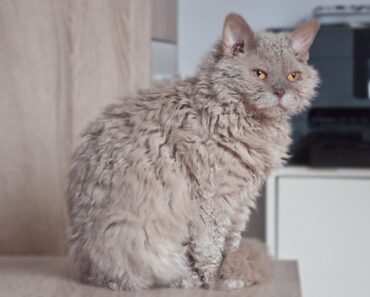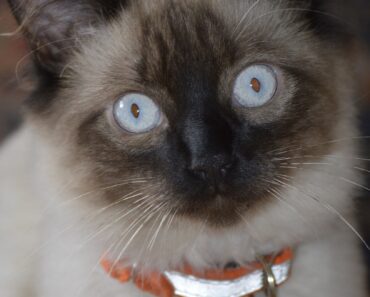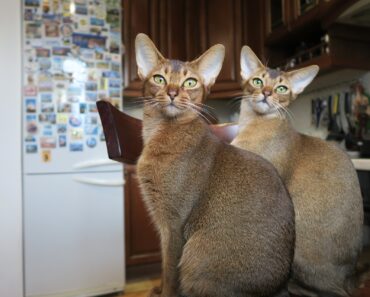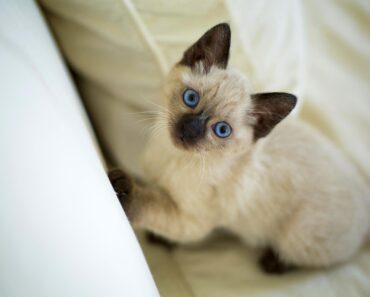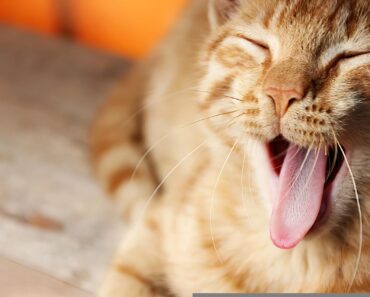
There is only one breed of squirrel-eared cat in the world: the Scottish. You can find ads for British scoop-eared pets, but officially this breed does not exist. The confusion arose from crossing the terms “British” and “Scottish”. They have a similar appearance due to similar genetics. Lop ears are available in single, double, and triple folds. The latter is considered the most valuable appearance.
Types of drop-ear cats
Lop-eared cats are divided into two main types (Scottish – short-haired): the Straight (straight-eared) and the Fold (floppy-eared). The former are those animals whose ears have not fallen off and remain straight at six months of age. In cats, floppy ears are not common to all kittens in a litter. Some straights become erect after only 1 or 2 months. In this case, they are considered Scottish folds.
Two other types are Highland (longhair). The folds have their ears close to the head, while the straights have straight ears. The Highlands are distinguished from the Scots by their long hair. Kittens are born with straight ears. Some have them on their heads as early as 5 months of age. Although this does not occur, some cat federations classify them as floppy ears but classify them as separate subspecies.
Description of appearance
The cats’ bodies are medium-sized, with well-developed musculature. Females weigh 4-5 kg, males 8-10 kg. The neck is strong, the legs massive, oval. The tail is thick, short, and tapered towards the tip. Cats with flattened ears have a ball-shaped head with puffy cheeks, a humped nose and a massive chin. Their eyes are large and set wide apart. Their coat is fluffy, thick and can be short or long. Cats come in a wide variety of colors:
- Tabby;
- Turtle;
- Monochrome, without pattern;
- Bicolored ;
- Marbled;
- Shell Cameo ;
- Colorpoint ;
- Van ;
- Chinchilla ;
- Harlequin ;
- Smoky.
Scottish floppy ears are characterized by a thick undercoat. The triangular ears flattened against the head, giving it a special charm. The eyes usually match the color and are often amber in color. Highland Folds have a slightly elongated head, rather than a distinctly spherical head, which moves smoothly toward the neck.
Character and attitude toward children
Floppy-eared cats are afraid of heights, so they won’t climb on curtains or cabinets. They are known for their calm character, aristocratic manners and kindness. They are attached to their owners and love children. Scottish Leopards are not talkative, their voice is rarely heard. Even as kittens, they have a small behavior, but they do not do much harm to the apartment.
They like to play with small objects. They are clean, affectionate, intelligent, and understanding. However, if they don’t like something, they can be stubborn. Floppy-eared cats prefer to be close to people (especially their beloved owners), but not in their arms. They like to be massaged with a brush, sleep on their backs, and are easy to raise.
Disease and resistance
Floppy-eared cats often stand to stretch their spines. They tend to be obese, so they should not be overfed and a healthy diet is important. They are a genetically modified breed, so they are prone to a number of conditions. For example, osteochondroplasia (an inherited joint disease), which can be fatal in cats.
Due to defective cartilage in the ears, pets often lose all or part of their hearing. An eyelid can develop in a Scottish Fold (can only be corrected by surgery). As pets age, the risk of eczema, glaucoma, allergies, or cataracts increases. Scabies, digestive and cardiovascular abnormalities are sometimes diagnosed.
Floppy-eared cats have quickly gained popularity due to their flattened ears, plush coat, and affectionate, malleable character. The cost of kittens with floppy ears with pedigree can vary from 5000 to 35000 thousand rubles. To be sure to get a healthy kitten, you should buy it in a cattery.

